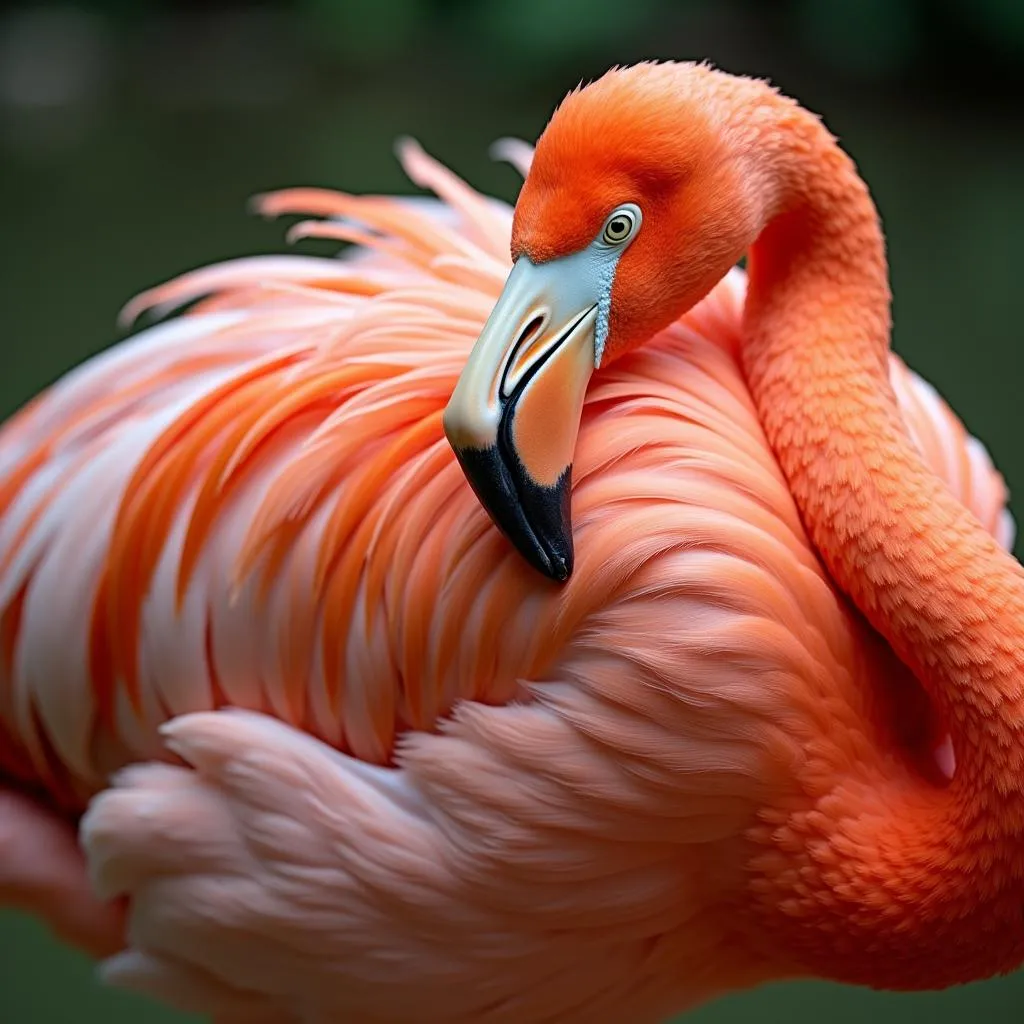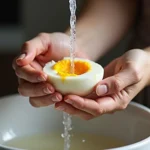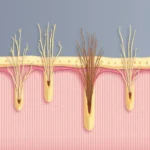Flamingos are known for their vibrant pink feathers, making them a favorite among bird enthusiasts and casual observers alike. But have you ever wondered why flamingos lose their color? It’s not a trick question – these iconic birds can actually fade in hue, and the reason might surprise you.
The truth is, flamingos aren’t born pink. They hatch with dull gray feathers, a far cry from the vibrant shades they’re famous for. So, how do they transform from drab to fab? The answer lies in their diet.
Flamingos consume a specialized diet rich in carotenoids, organic pigments found in algae and crustaceans like brine shrimp and krill. These pigments are the very same ones that give carrots their orange hue and tomatoes their vibrant red.
 Flamingo eating shrimp
Flamingo eating shrimp
When flamingos ingest these carotenoid-rich foods, their bodies metabolize the pigments and deposit them into their growing feathers. This process gradually transforms their plumage from gray to the iconic pink, orange, or even reddish hues we associate with these fascinating birds.
The Role of Carotenoids in Flamingo Coloration
Carotenoids play a crucial role in more than just a flamingo’s appearance. These pigments are also powerful antioxidants, protecting the birds’ cells from damage caused by free radicals. This is particularly important for flamingos, which live in harsh environments with high levels of UV radiation.
Furthermore, carotenoids contribute to the birds’ overall health and reproductive success. Studies have shown that flamingos with brighter plumage are often healthier and have better breeding success. This suggests that vibrant coloration serves as a visual indicator of a flamingo’s fitness and genetic quality.
 Flock of flamingos with varying shades of pink
Flock of flamingos with varying shades of pink
So, Why Do Flamingos Lose Their Color?
Now, let’s address the heart of the matter: why flamingos lose their color. Just as a steady diet of carotenoids leads to vibrant plumage, a lack of these pigments in their diet can cause their color to fade. This can occur for several reasons:
- Environmental changes: Droughts, pollution, or other environmental factors can impact the availability of algae and crustaceans, reducing the flamingos’ carotenoid intake.
- Stress and illness: When flamingos are stressed or ill, their bodies may prioritize essential functions over pigment deposition, leading to color loss.
- Captivity: In captivity, flamingos may not have access to the same variety and quantity of carotenoid-rich foods as they do in the wild, resulting in paler plumage.
 Flamingo molting with pale new feathers
Flamingo molting with pale new feathers
Maintaining Vibrant Plumage: It’s All About the Diet
To prevent color loss, captive flamingos are often fed a specialized diet supplemented with carotenoids. This ensures they receive the necessary pigments to maintain their vibrant pink hues.
Interestingly, the specific type and amount of carotenoids in a flamingo’s diet can influence the shade of pink they develop. For instance, flamingos that consume more shrimp tend to be a deeper shade of pink compared to those that primarily feed on algae.
Conclusion
The next time you marvel at the beauty of a flamingo’s pink feathers, remember that their vibrant hue is more than just a pretty sight. It’s a testament to the fascinating interplay between diet, environment, and evolution. The fading and regaining of their color serves as a visual reminder of the delicate balance that exists in nature and the importance of a healthy ecosystem for these magnificent creatures.

